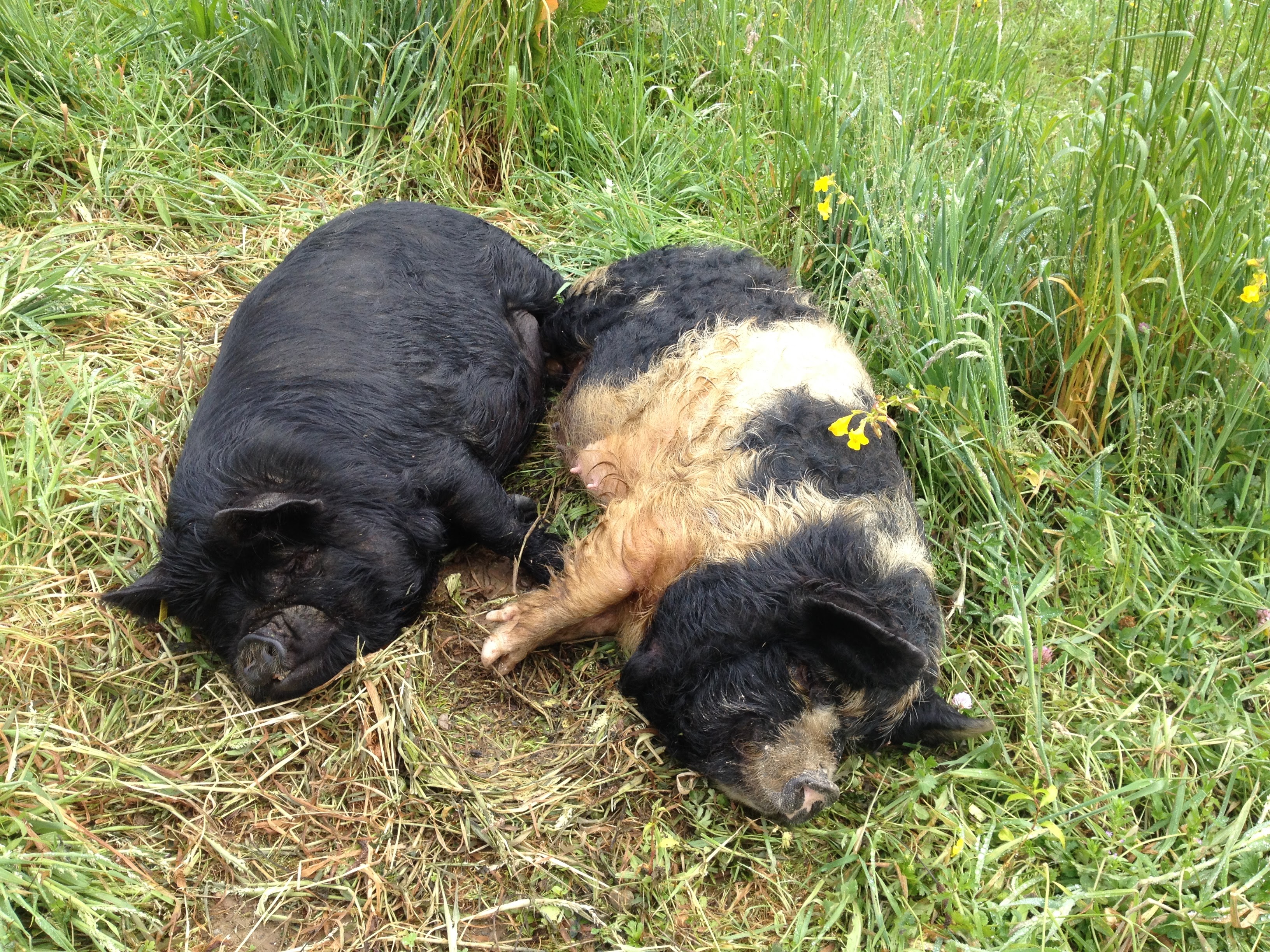The name Kunekune means ‘fat and round’ in Maori, a rather apt description for this unusual looking pig. The Kunekune is smaller that other breeds of pigs in New Zealand, although a very overweight Kunekune can still be a somewhat large pig. The characteristic Kunekune shape is a short-legged, short-snouted pig with a high fat depth giving very rounded body contours. A Kunekune pig in ‘show’ condition looks very different in body shape to the equivalent commercial pig, and the shortened nose and head give the Kunekune an almost comical appearance.
The tassels, or pire pire, are about 4cm long and hang from the lower jaw. Not all Kunekunes have tassels, as although it is a dominant gene the population contains a proportion of pigs without tassels. Occasionally piglets may be born with only one tassel, or sometimes they are not well attached and can be lost through injury. Breeders usually prefer to use only tasselled pigs for breeding, as breeding non-tasselled pigs increases the percentage of offspring without tassels. When a tasselled Kunekune is crossed with another breed, the offspring will be tasselled – so not all pigs with tassels are pure Kunekune.
The coat colour and texture of the Kunekune can vary considerably. The most common colours are black, black and white, brown, gold, tan, and cream, sometimes with randomly distributed spots and patches of colour. The coat texture can range from short silky hair giving a sleek appearance, to long coarse curls that give a more unkempt look. The coat also varies according to the time of year, sometimes resulting in a marked difference between summer and winter coats. Extensive hair loss in summer is common.
The typical Kunekune nature is of a sociable placid pig that likes close human contact. They are intelligent, resourceful, and affectionate, with a passion for food and a good scratch.
Although boars can be aggressive to each other or if a sow is in season, Kunekunes are usually very trustworthy, easy to handle, and safe to have children around.

Kunekune History
The Kunekune is a unique New Zealand breed of pig. Unfortunately, the origin of the breed is somewhat uncertain, as there is a lack of documented information on its introduction and early population numbers. Early records did not differentiate the Kunekune from other pigs such as the Captain Cooker and other breeds and crossbreeds kept by the Maori people.
The general consensus is that the Kunekune were probably brought to New Zealand in the 1800’s by whalers operating in New Zealand waters, and were traded with the Maoris. Pigs with similar characteristics occur in Asia, South America, and the Polynesian Islands, but the resemblance is slight and suggestive only of a possible common ancestry.
The history of the breed is one of a close association with the Maori people, and in the early 1900’s were usually only found associated with Maori settlements. In early times the Kunekune were prized for their placid nature and their tendency not to roam, as they have always been a domesticated pig. They were also valued for the quantity of meat and fat, the fat being used for preserving food.
In the late 1970’s the breed was ‘rediscovered’ and at that time it was estimated that there were only about 50 purebred Kunekunes left in New Zealand. From purebred base stock of only 6 sows and 3 boars in 1978, the Kunekune now numbers in the thousands. It is due to the enthusiasm and dedication of people like Michael Willis and John Simister that the breed was saved from extinction.
Nowadays, the Kunekune has found its niche as a pet pig. Its unique appearance, placid nature, and small round size that made it unacceptable in a commercial environment has enabled this special breed to find its place in modern New Zealand life.

